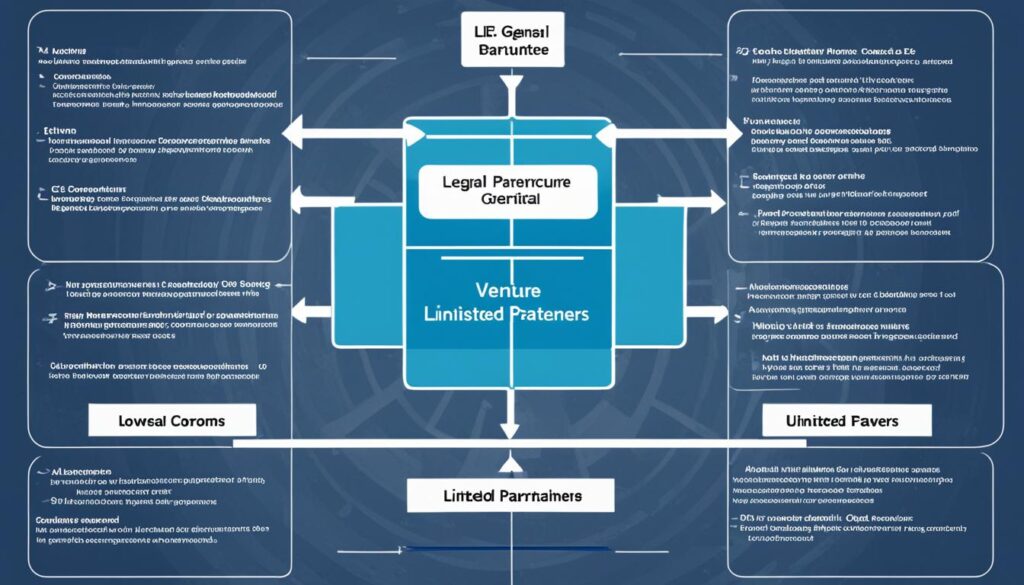Starting a venture capital firm from scratch can seem daunting, especially if you don’t have significant personal wealth to contribute to the fund’s capital requirements. However, there are innovative strategies you can leverage to launch your own VC firm without large upfront capital. This comprehensive guide will explore the key steps and considerations for aspiring venture capitalists to start a VC firm with no money.
But the real question is, can you truly build a successful venture capital firm without any personal financial investment? The traditional path has been to have “skin in the game,” but is that still the only way forward? Let’s dive in and uncover the secrets to starting a VC firm from scratch, even if you don’t have deep pockets.
Key Takeaways
- Explore innovative strategies to launch a VC firm without large upfront capital
- Understand the key steps and considerations for aspiring venture capitalists
- Discover alternative paths to building a successful VC firm beyond personal wealth
- Learn how to leverage partnerships, track record, and creative funding solutions
- Gain insights into the evolving venture capital landscape and new opportunities
Understanding Venture Capital
Venture capital (VC) is a specialized form of private equity investment focused on providing capital to early-stage, high-growth companies with the potential for significant value appreciation. VC investors, known as venture capitalists, pool their own capital along with funds from outside investors, called limited partners (LPs), to create investment vehicles known as venture capital funds. These funds are managed by general partners (GPs), the professionals who make investment decisions and oversee the fund’s operations.
What is Venture Capital?
At its core, venture capital is an investment model where VC firms provide financing to promising startups and private companies in exchange for an ownership stake. The ultimate goal for venture capitalists is to identify and support innovative businesses that can rapidly grow in value, allowing the VC firm to eventually sell its equity stake at a significant profit.
Distinction Between VC Firms and VC Funds
It’s important to understand the distinction between VC firms and VC funds. A VC firm is the investment management company that raises and manages one or more VC funds. The firm hires the investment professionals, known as general partners, who are responsible for sourcing, evaluating, and managing the fund’s portfolio companies. In contrast, a VC fund is the actual investment vehicle that pools capital from limited partners and deploys it into startup investments as per the fund’s stated investment strategy and objectives.
| Characteristic | VC Firm | VC Fund |
|---|---|---|
| Structure | Investment management company | Investment vehicle |
| Participants | General partners | General partners and limited partners |
| Role | Manages the investment process and portfolio | Deploys capital into startup investments |
| Lifespan | Ongoing, with multiple fund generations | Typically 10-12 years per fund |
By understanding the venture capital ecosystem and the distinct roles of VC firms and VC funds, aspiring fund managers can better navigate the process of launching their own venture capital firm and raising institutional capital to invest in promising startups.

Building Your Track Record
To start your own venture capital firm, you’ll need to establish a track record as an investor. If you don’t have prior experience making successful investments, there are a few ways you can build a track record:
Angel Investing
One way to demonstrate your angel investing experience is by making small investments in early-stage startups. This not only allows you to gain hands-on investment experience but also helps you build relationships with founders and other investors in the ecosystem.
Special Purpose Vehicles (SPVs)
Another strategy is to set up special purpose vehicles (SPVs) to make investments alongside established venture capital firms. This can be an effective way to gain exposure to the VC industry and learn from more experienced investors while also putting capital to work.
Warehousing Investments
You can also consider warehousing investments, where you provide bridge financing to startups with the intention of transferring those positions to your future venture capital fund. This helps you build a portfolio of investments and demonstrate your investment performance before launching your own fund.

Partnering Up
While it’s possible to start a venture capital firm solo, partnering with someone who can complement your own skills and expertise can be very beneficial, especially for first-time fund managers. For example, if you have a strong operational background as a former COO, you may want to partner with someone with a finance or technical background.
Complementary Skills and Expertise
When co-founding a VC firm, it’s crucial to identify complementary skills and expertise that can help strengthen the firm’s overall capabilities. This could include individuals with backgrounds in investment analysis, portfolio management, industry-specific knowledge, or even legal and compliance expertise.
Roles and Responsibilities
In a VC firm co-founder partnership, it’s important to clearly define the roles and responsibilities of each general partner. This ensures a cohesive and efficient decision-making process, as well as a shared understanding of how the firm will operate and allocate resources.
By partnering for a VC firm and leveraging complementary skills and expertise, you can build a VC firm co-founder team that is well-equipped to navigate the complexities of the venture capital industry and provide value-added support to your portfolio companies.

Structuring Your VC Firm
When it comes to the legal structure of a venture capital firm, the two most common options are the
limited partnership
and the
limited liability company (LLC)
. Each approach has its own advantages and considerations for aspiring VC fund managers.
Limited Partnership Structure
The limited partnership structure is a popular choice for many venture capital firms and funds. In this model, the VC firm serves as the general partner (GP), while the investors are considered limited partners (LPs). The general partner has full legal authority over the fund’s operations and investments, while the limited partners provide the capital but have a more passive role.
Limited Liability Company (LLC)
An alternative to the limited partnership is the limited liability company (LLC) structure. The LLC is a separate legal entity that serves as the VC fund management company. This structure offers more flexibility in terms of governance, decision-making, and tax considerations compared to a traditional limited partnership.

Ultimately, the choice between a limited partnership or LLC will depend on factors such as the VC firm’s investment strategy, tax considerations, and the preferences of the limited partners. Consulting with legal and financial professionals can help aspiring VC fund managers determine the optimal structure for their firm and fund.
How to Start a Venture Capital Firm with No Money?
The traditional path to starting a venture capital firm has been to have significant personal wealth to contribute as the general partner’s “skin in the game.” However, this upfront capital requirement has long been a barrier for aspiring VCs without access to large sums of their own money. Fortunately, there are innovative strategies that can help you launch your own VC firm without large upfront funding.
One approach is to build a track record as an angel investor or by creating special purpose vehicles (SPVs) to make smaller investments. This can demonstrate your investment acumen and help you attract limited partners (LPs) when it’s time to raise your first venture capital fund.
Another option is to partner with someone who can complement your skills and expertise. For example, if you have strong operational experience, you might team up with a finance or technical expert to create a well-rounded founding team for your VC firm.
Structuring your VC firm as a limited liability company (LLC) or limited partnership (LP) can also make it more appealing to potential LPs, as these legal structures provide certain tax and liability benefits.
Ultimately, the key to starting a VC firm with no money is to get creative with your funding strategies, build a strong track record, and assemble a talented team. By leveraging these approaches, you can launch your venture capital firm without significant personal wealth.

Fundraising and Fund Formation
To get your first venture capital fund up and running, you’ll need to raise capital from limited partners who will invest in your fund. This VC fund raising process involves soliciting commitments from institutional investors, family offices, high-net-worth individuals, and other sources of capital.
Soliciting Limited Partners
Reaching out to potential limited partners (LPs) and securing their commitments is a crucial step in forming a VC fund. This may involve creating a compelling investment thesis, demonstrating your team’s expertise, and highlighting your track record (if applicable). Maintaining a strong network and leveraging personal connections can also be beneficial in soliciting limited partners for VC fund commitments.
Limited Partnership Agreement
Once you’ve secured commitments from LPs, you’ll need to establish the limited partnership agreement for VC fund that will govern the fund’s structure and operations. This agreement outlines the roles and responsibilities of the general partner (your VC firm) and the limited partners, as well as the terms for capital contributions, profit distributions, and other key provisions. Drafting a comprehensive VC fund formation agreement is crucial to ensuring the long-term success and alignment of interests between all parties involved.

Bringing Resources Back In
As the general partner (GP) of the venture capital fund, the LLC you created to manage the fund has the legal authority to oversee the fund’s affairs. This includes the ability to hire service providers to support the fund’s operational infrastructure and back-office support for the VC firm.
Management Company Structure
The management company, which is typically structured as an LLC, serves as the general partner of the venture capital fund. This entity is responsible for making investment decisions, managing the fund’s portfolio, and overseeing all operational aspects of the fund. The management company can then leverage its authority to engage service providers to assist with various functions, such as accounting, legal compliance, investor relations, and fund administration.
Hiring Service Providers
By hiring experienced service providers for VC firms, the management company can build out the necessary operational infrastructure for VC funds without taking on all the responsibilities in-house. This allows the investment team to focus on sourcing and evaluating potential investments, while relying on trusted third-party experts to handle the fund’s back-office operations. Some key service providers that VC firms often engage include:
- Accounting and tax firms
- Legal counsel and compliance specialists
- Fund administrators for portfolio management and reporting
- Investor relations and capital raising support
- Information technology and cybersecurity providers
By leveraging these service providers for VC firms, the VC firm management company can efficiently set up and operate the fund, focusing its resources on the core investment activities that drive returns for limited partners.

Operationalizing Your Fund
The final step in starting your venture capital firm is identifying the right service providers to support the launch and ongoing operations of your VC fund. This includes securing the necessary banking and financial services, establishing the appropriate legal and compliance framework, and implementing comprehensive fund administration services to ensure the smooth functioning of your VC fund.
Banking and Financial Services
Establishing a robust banking and financial infrastructure is crucial for the effective management of your VC fund’s operations. This includes setting up dedicated bank accounts, securing credit facilities, and implementing robust accounting and reporting systems to track the fund’s financial performance, cash flow, and investor-related activities.
Legal and Compliance Services
Navigating the complex legal and regulatory landscape is a critical aspect of operationalizing your VC fund. Engaging with experienced legal counsel and compliance professionals can help you ensure that your fund structure, investment policies, and overall operations adhere to relevant laws and regulations, such as those set forth by the U.S. Securities and Exchange Commission (SEC) and other governing bodies in the venture capital industry.
Fund Administration Services
To support the day-to-day operational infrastructure of your VC fund, you’ll need to partner with a specialized fund administration service provider. These professionals can handle tasks like investor relations, capital calls, distributions, performance reporting, and other critical administrative functions, freeing up your team to focus on sourcing and managing investments.
| Service Provider | Key Responsibilities |
|---|---|
| Banking and Financial Services |
|
| Legal and Compliance Services |
|
| Fund Administration Services |
|
By carefully selecting and partnering with the right service providers, you can ensure that your venture capital fund is operationally efficient and compliant, allowing you to focus on sourcing, evaluating, and managing promising investment opportunities.

Raising Your First VC Fund
Even if you’re an experienced investor, raising your first venture capital fund requires a different skillset than making individual investments or working within an existing VC organization. Many first-time fund managers structure their VC fund investment thesis around their personal expertise and networks, as these can provide privileged access to deal flow, talent, and industry knowledge.
Defining Your Investment Thesis
Before embarking on the VC fundraising strategy, it’s crucial to clearly define your investment thesis – the specific problem you aim to solve and the approach you’ll take to address it. This thesis should be informed by your domain expertise, market insights, and a deep understanding of your target market. By articulating a compelling and differentiated investment thesis, you’ll be better positioned to attract the right limited partners (LPs) who align with your vision.
Understanding Your Target Market
Conducting thorough VC target market analysis is essential when raising your first VC fund. This involves researching your industry, identifying key trends and pain points, and understanding the competitive landscape. By demonstrating a nuanced understanding of your target market, you can showcase your ability to source and evaluate promising investment opportunities that align with your fund’s VC fund investment thesis.
Competitive Landscape Analysis
To successfully raise your first VC fund, you must also have a clear grasp of the VC fund competitive landscape. Research other VC firms operating in your target sectors, understand their investment strategies, and identify potential areas of differentiation for your fund. This analysis will help you position your fund’s unique value proposition and articulate how you can outperform the competition in identifying and supporting high-potential startups.

Alternative Strategies for No-Money Commitments
Traditionally, venture capitalists have been required to contribute a sizable portion of their own capital, often 2-3% of the total fund size, as “skin in the game” to demonstrate their alignment with limited partners. However, this upfront capital requirement has long been a barrier for aspiring VCs without access to significant personal wealth. Fortunately, there are now alternative strategies that allow VC firms to launch and operate without the need for substantial personal capital commitments.
Flexible LP Requirements
Some VC firms are finding success by negotiating more flexible limited partner (LP) requirements. This may involve securing commitments from LPs that are willing to accept a lower GP commitment, or even no personal capital contribution, in exchange for other concessions such as enhanced economics or advisory board seats. Exploring these flexible LP structures can open the door for first-time fund managers to get their VC firms off the ground without significant personal wealth.
Management Fee Offsets
Another strategy for VC firms to operate without personal capital is to negotiate management fee offsets with their LPs. This involves the VC firm agreeing to charge a lower annual management fee in exchange for a larger share of the carried interest (typically 20% of the fund’s profits). This can help offset the lack of personal capital contributions and align incentives between the GPs and LPs.
Collateralizing Existing Portfolios
Aspiring VC fund managers with an existing portfolio of investments may be able to leverage those assets as collateral to secure financing for their new fund. This could involve using the value of their angel investments or prior VC deals to obtain bank loans or other forms of debt financing to cover the required GP commitment. By collateralizing their existing investments, they can launch a new VC fund without needing to tap into their personal wealth.
Leveraging Personal Networks
Building a VC firm from scratch often comes down to leveraging your personal and professional network to source deals, attract limited partners, and assemble the right team. By tapping into your network of relationships with entrepreneurs, angels, and other industry contacts, you can potentially secure commitments from LPs who are willing to back your fund based on your reputation and deal flow, even without significant personal capital contributions.
Bank Loans and Financing Options
In addition to collateralizing existing investments, VC firms can also explore bank loans and other financing options to cover the required GP commitment. This may involve securing a line of credit, taking out a personal loan, or even crowdsourcing capital from friends and family. While these strategies come with their own set of risks and considerations, they can provide a path to launching a VC firm without relying solely on personal wealth.
Front-Loading Management Fees
Some VC firms have found success by front-loading their management fees, where a larger portion of the fees are collected upfront rather than being spread evenly over the life of the fund. This can help generate the necessary capital to cover the GP commitment and other startup costs, allowing the firm to get off the ground without significant personal wealth.
By exploring these alternative strategies, aspiring venture capitalists can overcome the traditional barriers to entry and start their own VC firms without the need for substantial personal capital commitments. This opens up the industry to a more diverse pool of talent and ideas, ultimately driving innovation and growth in the venture capital ecosystem.
Conclusion
Starting a venture capital firm from scratch can seem daunting, but the evolving landscape has opened up new opportunities for aspiring VCs without access to significant personal wealth. By leveraging innovative strategies like angel investing, special purpose vehicles, and strategic partnerships, you can build a successful VC firm and raise your first fund without the traditional upfront capital requirements.
The key is to focus on establishing a strong track record, securing the right partners, and structuring your firm and fund in a way that minimizes the need for large personal investments. With the right approach, you can turn your venture capital dreams into reality, even without a substantial personal fortune to contribute.
Ultimately, starting a VC firm without money is not only possible but can be a rewarding path for determined and resourceful individuals who are willing to think creatively and leverage the available strategies. By following the steps outlined in this guide, you can position yourself for success in the dynamic world of venture capital.
